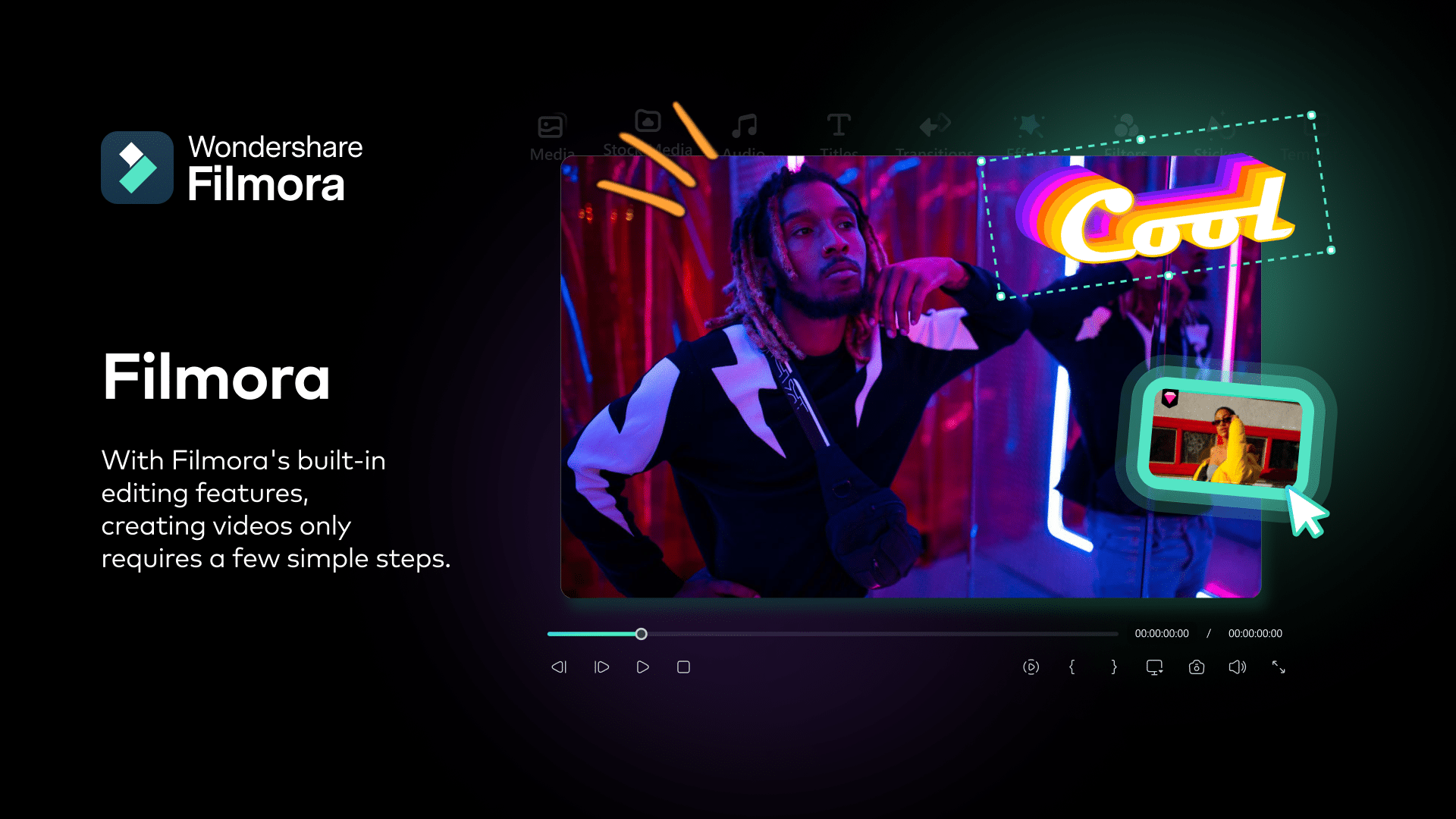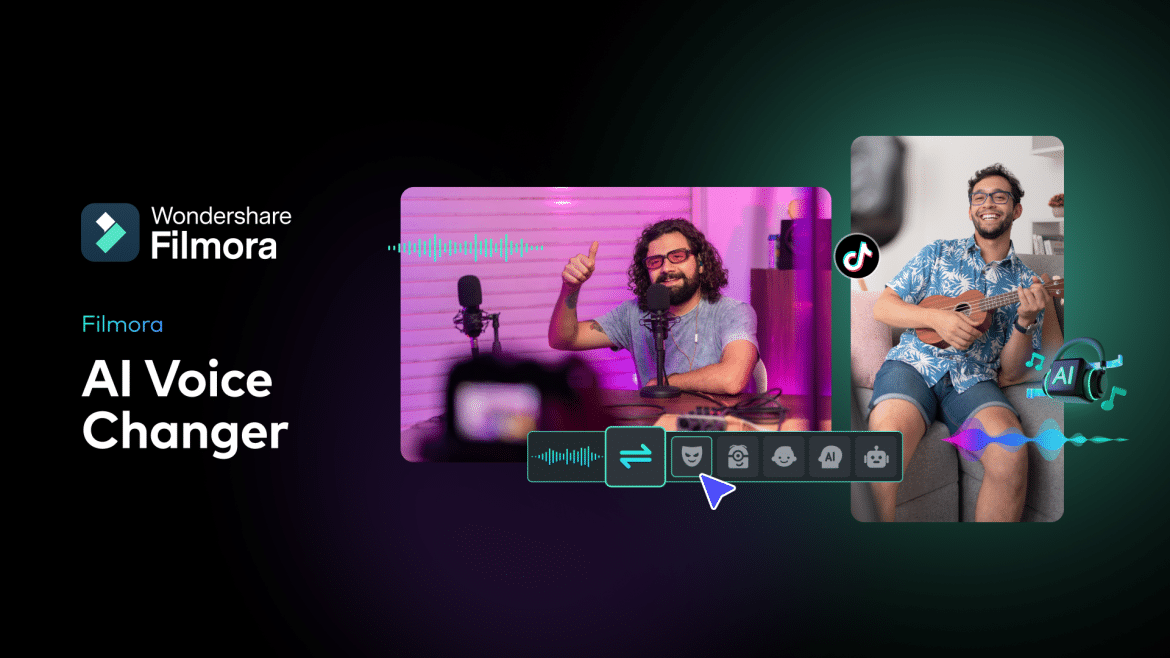Audio accessibility is vital in making sure that the content is inclusive and attractive to various audiences. Filmora’s AI Voice Changer offers cutting-edge solutions to enhance audio accessibility. This makes it easier for those with disabilities to interact with audio-visible content. This article explores how Filmora’s AI Voice Changer may be used to enhance audio accessibility, from creating audio descriptions to enhancing speech readability.
Enhancing Speech Clarity
One of the primary strategies Filmora’s AI Voice Changer improves audio accessibility is through improving speech clarity. Clear speech is crucial for listeners to understand the content, especially for people with hearing impairments or individuals who are far away from the audio system. Here’s how Filmora’s AI Voice Changer contributes:
- Noise Reduction: The AI can weed out and reduce data noise, ensuring that the speaker’s voice is clear and wonderful. This is specially beneficial in recordings made in noisy environments.
- Pitch and Tone Adjustment: Adjusting the pitch and tone ought to make speech simpler to understand. For example, a decreased pitch may be more comfortable for a few listeners to understand, and adjusting the tone ought to make the voice sound more natural and much less like a robot.
- Volume Consistency: Maintaining steady volume within the course of the audio prevents unexpected adjustments that can be jarring for listeners, ensuring an easy and snug listening experience.
Creating Audio Descriptions
Audio descriptions are crucial for making visual content accessible to visually impaired persons. These descriptions narrate the visual elements of the content, allowing visually impaired clients to understand and enjoy the media. Filmora’s AI Voice Changer can be a useful resource in developing powerful audio descriptions:
- Multiple Voice Options: The AI Voice Changer gives several voice options, permitting creators to select a voice that is easy and great for narrating descriptions.
- Natural Sounding Narration: The AI can produce natural-sounding voices which are probably attractive and easy to understand, making the audio descriptions extra fun for listeners.
- Customization: Creators can personalize the voice to a wholesome tone and fashion the content such that the descriptions are not just informative but also in concord with the overall production.
Supporting Multilingual Accessibility
For content to be readily available, it needs to cater to audiences who talk different languages. Filmora’s AI Voice Changer excels in providing multilingual aid:
- Language Translation: The AI can assist in translating audio content into more than one language while retaining the actual speech’s naturalness and clarity. This makes it a whole lot less complicated for non-local people to experience the content.
- Voice Adaptation: It can adapt voices to sound organic in a different language, retaining the right tone and emotional context of the content.
- Consistent Voice Characteristics: Maintaining normal voice creates an experience that is enjoyable for multilingual audiences.
Improving Engagement for Diverse Audiences

Voice Customization for Different Audiences:
Content creators can customize voices to cater to different types of target audiences, collectively by using baby voice narrations for more youthful audiences or using extra formal tones for educational content.
Enhancing User Experience:
By providing easy and appealing audio, the AI Voice Changer helps in maintaining the audience engaged, making sure that the message is correctly communicated.
Inclusion of Accents and Dialects:
The AI can mirror numerous accents and dialects, making content extra relatable and handy to audiences.
Practical Applications in Real-World Scenarios
Filmora’s AI Voice Changer has practical packages in numerous real-world situations to enhance audio accessibility:
Educational Content:
Teachers and educators can use the AI Voice Changer to create smooth and appealing audio for educational movies, making sure that every student, including those with studying disabilities, can follow along with the course material.
Corporate Training:
In corporation schooling modules, smooth and normal narration can help people better recognize the material, especially in multiple offices with a multilingual frame of workers.
Conclusion
Filmora’s AI Voice Changer is an effective tool in enhancing audio accessibility, ensuring that content is inclusive and appealing to several audiences. By enhancing speech clarity, helping in the creation of audio descriptions, helping multilingual accessibility, and enhancing engagement for extremely good audiences, Filmora’s AI Voice Changer plays a pivotal function in making audio-visual content more available.
As technology continues to enhance, the capability for AI in improving accessibility will definitely increase, thus breaking down barriers and making sure that everyone can use and take advantage of media content.

